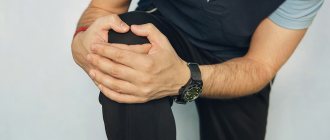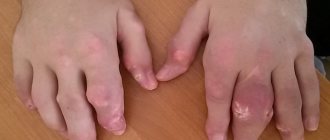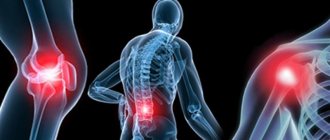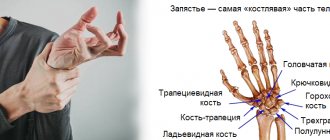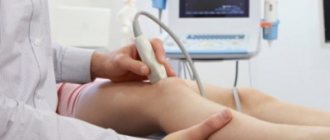We often do not fix our attention on the minor pain that accompanies us during movement, be it walking or other body manipulations. Meanwhile, discomfort or pain, which at first seems trivial, sometimes develops into a real problem or serious pathology.
Doctors constantly urge you to “listen” to your body and, at the slightest hint of pain, seek help. If there is pain in the foot under the toes while walking, you should go to the clinic, as this may indicate a serious illness. Many people attribute this condition to fatigue of the lower extremities from prolonged walking; this opinion is wrong. Let's look at this issue from all sides and find out what the pain that manifests itself in the area of the foot under the toes is fraught with.
Unpleasant sensations
You should be concerned if you have pain in the ball of your foot. How to treat this disease will be discussed further. We must always remember that painful sensations in the legs are not always a sign of pathology, even if they cause serious concern to patients.
Typically, the foot swells when there is increased stress on the leg. This often happens among athletes who place an inappropriately high load on their lower limbs. If you haven’t had anything like this, then most likely your foot hurts due to some pathology. So this situation is worth considering as closely as possible.
To establish a possible cause, you need to determine the location of the pain and understand the reason for the discomfort. Painful sensations in the legs are often diffuse. In this case, diffuse pain is felt throughout the entire foot. It can also be local. The patient is able to indicate the specific location where pain occurs.
When the foot hurts when walking, this may be due to problems in the nervous or muscular system, or pathologies of the musculoskeletal system. Some of the most common causes of leg pain are plantar fasciitis, Morton's neuroma, rheumatoid arthritis, and other traumatic injuries.
Treatment
Based on the findings after diagnostic measures, a diagnosis is made and treatment is prescribed, which includes a number of different methods. It completely depends on the nature of the disease, its stage and locality.
- It happens that an ingrown toenail causes pain, and then surgical treatment is indispensable.
- Hormonal treatment will be necessary if you have a disease such as osteoporosis. Here you will need the help of calcium supplements and vitamins; vitamin-mineral complexes are a good example.
- Flat feet are corrected with the help of special devices, which are orthopedic insoles or shoes for flat feet.
- Pinched nerves require specialized assistance from chiropractors and physical therapy with the selection of exercises unique to this case.
- In case of mechanical damage, the area of the foot that was injured is examined, a bandage is applied, and if fixation is required, a cast is made.
- If the pain is caused by an inflammatory process, anti-inflammatory therapy with the use of medications, compresses, ointments and other medications is recommended.
If we divide therapeutic methods into several types, we can identify the main ones, which we will consider further.
Conservative way
With this method of treatment, the following medications are prescribed:
- Non-steroidal agents for external and internal use;
- Painkillers;
- Rubbing and warming agents;
- Chondroprotectors.
Traditional treatment includes plaster, splints for fixing injuries, and taping. To better supply blood to the sore spot and lymph nodes, massage can be prescribed; it improves metabolic processes and helps tissue healing.
Gymnastics
Therapeutic gymnastics includes several simple exercises:
- In a lying or sitting position, it is recommended to rotate the feet in different directions 10 times;
- Rolling a small ball across the floor or picking up (grabbing) small objects with your toes.
All exercises are done with bare feet.
Folk way of healing
Here it is worth highlighting several very useful procedures that come as an addition to the above methods:
- Therapeutic baths to which essential oils and herbal infusions are added greatly help speed up the recovery process. Natural ingredients in the form of juniper oil, lavender, eucalyptus can improve blood circulation, relax muscles and relieve pain.
- A contrast shower for the lower extremities also improves blood flow and stimulates tissue regeneration.
- Cold lotions help relieve swelling and inflammation. Here it is important to act without fanaticism, otherwise the body may become hypothermic; 3 minutes for the procedure will be enough.
Plantar fasciitis
This is one of the most common reasons for pain in the ball of the foot. Orthopedists and traumatologists know how to treat this disease, and you should contact them first. With this disease, a person’s foot can hurt, regardless of his build, age and load. In this case, everything depends on the specifics of this pathology.
Fasciitis is a lesion of the elastic tissues of the foot that connect the heads of the metatarsal bones and the heel tubercle. These connections are traumatic in themselves, and athletes, patients with flat feet and excess weight are at risk. They regularly have pain in the balls of their feet when walking.
Symptoms
The symptoms of this disease are extremely unpleasant for patients. Therefore, you need to go to the hospital as quickly as possible. After a thorough examination and diagnosis, the doctor, depending on your specific case, will choose surgical or conservative treatment methods.
At the initial stage of treating pain in the ball of the foot, doctors try to overcome the pathology using physiotherapeutic methods. If the patient seeks help in time and carefully follows all the specialist’s recommendations, then he will be able to cope with the disease without resorting to surgical intervention. As a rule, in these cases, shock wave therapy, electrophoresis, UHF therapy, and phonophoresis are used.
A massage that will relieve tension from the heel and help restore the ball of the foot is also effective. This set of measures can provide analgesic, calming and anti-inflammatory effects. When carrying out a full course of treatment, the effectiveness reaches 90 percent.
Reviews
Svetlana, 44 years old, Moscow “Quite recently I ended up on the surgical table under the surgeon’s knife with inflammation of the ligaments between the fingers. The doctor said that this disease is associated with wearing heels and advised to reduce their height. Indeed, I have been wearing high heels my entire adult life. I didn’t think it could cause such problems.”
Mikhail, 38 years old, Voronezh “I constantly have pain in my feet. After a visit to the doctor, I realized what was wrong, the weight was interfering. I weigh 120 kg, which is too much for my height and leg size. I went on a diet, I will lose weight, because the pain prevents me from walking, and my legs began to ache even at night.”
Medicines
There are other methods that help when the ball of the foot hurts. Your doctor will tell you how to treat this problem. For example, he may recommend orthopedic patches that are glued directly to the foot. They are made on a natural basis, activating blood circulation, normalizing metabolic processes that develop in the limbs.
These patches have a warming effect, and the duration of therapy directly depends on the severity of the lesion and the individual characteristics of the body. On average, recovery takes three to six months.
Gels and ointments
Also, for fasciitis, it is recommended to use gels and ointments to treat pathology when it is painful for the patient to step on the foot. These medications help not only relieve pain, but also have an anti-inflammatory effect. They are effective for tissue swelling to restore lymph flow and blood circulation.
For pain on the sole of the foot under the toes, use Chondroxide, Voltaren, Diclofenac, Viprosal, and prednisolone ointment. Remember that many ointments have contraindications, so you should consult your doctor before taking them.
Features of treatment
Surgery is required for infected wounds, the formation of purulent foci, or significant damage to joints or ligaments. In other cases, conservative treatment is sufficient, which is aimed at:
- elimination of pain and swelling;
- elimination of inflammatory foci;
- improved blood circulation;
- regeneration of articular tissues;
- strengthening ligaments;
- normalization of load distribution on the feet;
- increasing local immunity;
- restoration of foot functions.
To solve these problems, medications are used (anti-inflammatory drugs, chondroprotectors and others), as well as non-drug methods: physiotherapy, physical therapy and massage. Only an integrated approach can completely cope with pathologies that cause pain and numbness in the soles of the feet.
Surgery
If conservative treatment methods do not bring the desired result, the possibility of surgical intervention must be considered. In particular, for this disease, blockers are used, which can relieve the patient of pain for several months, and sometimes completely relieve discomfort in the foot. Diprosan, Kenalog, and Hydrocortisone can help with this. To achieve the effect, two or three procedures are required. When destructive processes lead to rupture of the plantar fascia, urgent surgical intervention is required.
During the operation, the doctor removes tissues that have undergone pathological changes and removes growths that have formed during this time. The operation is possible only with wide access and modern equipment, since endoscopic intervention is required. As a result, it gives virtually no complications. After the operation, the patient requires a recovery period, during which the foot should not be loaded; massages and baths are recommended.
What is on the foot between the heel and toe?
Each foot has about 26 bones that are connected by ligaments. The strongest and largest of them is the plantar fascia (aponeurosis). It looks like a wide plate connecting the heel and the base of the toes. If you imagine that the arch of the foot is the shaft of a bow, the fascia is its bowstring, it keeps the arch from sagging and springs for shock absorption.
Why does the middle of my foot hurt?
A healthy plantar (or plantar) fascia is quite elastic and only stretches slightly under load. If the height of the arches falls, the attachment points of the fascia diverge and it becomes tense. With even greater tension, a tightly stretched ligament no longer stretches, but breaks.
A strained ligament can lead to a variety of symptoms. All of them definitely affect the health of the feet and sharply limit activity. Inflammation of the fascia is called plantar fasciitis and can manifest itself in several forms:
- Proximal fasciitis. A sharp, acute or aching pain appears in the depths of the heel area. A “heel spur” on an x-ray is just a sign that the fascia has been tense for a long time. The pain is not caused by a bone spike, but by damage to the fibers of the ligament.
- Middle form. It occurs very often. My foot feels like it's splitting with every step. The sole aches and hurts, sometimes the discomfort simply makes it impossible to move. Rarely, a large rupture of the plantar ligament may occur: the pain becomes unbearable, the foot swells, and the arches become flattened.
- Distal form. The pain is in the area closer to the fingers. It is less common and can imitate the symptoms of transverse flatfoot and Morton's disease.
How is plantar fasciitis usually treated?
The acute phase of the disease is usually treated symptomatically. The patient is advised to walk less and apply ice packs through a cloth to the painful area. If the discomfort is significant, it is recommended to take anti-inflammatory drugs. These are absolutely correct prescriptions for a short-term fight against exacerbation.
It is somewhat worse if the doctor begins treatment of fasciitis with rather dangerous and unreliable methods. Although they can relieve pain quickly, there will be more complications in the long term. Methods that are still actively practiced contrary to international recommendations include:
- Blockades with steroid hormones. This is “heavy artillery” that dampens pain well, but often causes more harm. Steroids slow down regeneration, reduce the strength of ligaments, and reduce local immunity. The most dangerous side effect is the resorption of the fatty pad of the heel. Sometimes a single injection of the hormone is acceptable, but regular use will certainly lead to complications.
- Radiotherapy. You can also meet patients who try by all means to get an X-ray of their heel, believing that it will remove the “heel spur.” In fact, a bone thorn can only be eliminated by a special radiation device, which is used to fight tumors. On its way, a concentrated beam of radiation destroys all cells, and its use is justified only in oncology.
Arthritis of the foot
If a patient is diagnosed with foot arthritis, treatment should begin as early as possible. This therapy is aimed at neutralizing painful sensations. For this, the patient is prescribed non-steroidal anti-inflammatory drugs. After a few days of intensive therapy, the patient will begin to feel that it has become easier for him to walk, and the pain in the joint is reduced.
When inflammation develops, antibacterial drugs may be needed to relieve the suppurative process and swelling.
During therapy, chondoprotectors must be taken, in particular, Chondroitin. This remedy helps maintain the volume of cartilage tissue in a normal amount, the patient stops suffering from pain in the feet.
Additionally, for such problems, doctors prescribe physical therapy, physiotherapeutic procedures, massage, and sanatorium and resort treatment helps. Doctors may also recommend taking a course of electrophoresis with hydrocortisone, phonophoresis, or UHF procedures. Mud or iodine-bromine baths, radon baths, and paraffin therapy are effective.
Functions of the foot
The main supporting part of the human lower extremities is the foot.
If you feel pain or discomfort at the base of your foot when walking, you cannot ignore these negative phenomena.
Often it is shoes that serve as a source of irritation to the tissues of the feet when a person experiences discomfort from poor-quality shoes or high heels. There is a high probability of developing various pathological processes inside the foot.
Pain in the plantar part can be experienced by people who are overweight, because the load on a small area of the foot increases several times. Patients forced to lie down for a long time, adhering to bed rest, often suffer from thinning of muscles and bone tissue. When you press on the sole when walking after lying for a long time, you often feel pain, spasms and numbness.
Folk remedies
There are also folk remedies that are used for foot arthritis. One of the most effective and proven recipes is iodine with aspirin. Several aspirin tablets should be applied to the affected joint, first crushed, and then a gauze bandage soaked in water should be applied on top.
Put a sock on top. It is best to do this procedure at night. If the foot has become severely deformed, the treatment does not have the desired effect. you need to undergo surgery.
Calluses on feet
A callus on the ball of your foot should seriously concern you, as if it is not removed promptly, it can lead to the development of a serious disease. The fact is that the callus will regularly put pressure on specific points associated with a specific organ. Because of this, excessive stimulation of these points begins.
Therefore, it is necessary to pay special attention to the condition of your feet, take care of your feet, prevent the formation of corns and calluses, and always wear comfortable shoes.
A callus on the pad, located along the four fingers, indicates that attention needs to be paid to the respiratory system. These same calluses can lead to overstrain, nervous exhaustion, and depression.
CAUSES OF PAIN IN THE FOOT AND FOOT JOINT
Inflammation of the Achilles tendon (tendinitis) can occur:
- when the legs are overloaded, if you walk or run an unusually long distance;
- doing this in low-quality or worn-out sports shoes;
- if a person begins intense physical activity without warming up the leg muscles.
However, inflammation of the Achilles tendon may have more obscure causes. Often the cause of the problem is not in the tendon, but, for example, in lifestyle - if a person smokes, drinks alcohol heavily, or is overweight. Inflammation of the Achilles tendon can also be the result of poor posture or differences in the anatomy of the foot, leg or knee, causing the load to be distributed unevenly on the legs. Inflammation of the Achilles tendon is indicated by:
- pain and stiffness, which are more pronounced in the morning and the next day after physical activity;
- compaction in the tendon;
- swelling, which intensifies during the day with load on the leg.
If the symptoms of inflammation do not go away within two to three days, you should consult an orthopedic traumatologist. Inflammation of the Achilles tendon is treated with non-steroidal anti-inflammatory drugs, various injections and physical therapy. In some cases, tendonitis is treated surgically. If acute tendonitis is not treated, the inflammation can become chronic. If left untreated, Achilles tendon inflammation will recur, increasing the likelihood of tendon rupture. The longer chronic inflammation of the Achilles tendon persists, the more difficult it is to treat. A rupture of the Achilles tendon can be caused by the same reasons that cause its inflammation. The moment a tendon ruptures is characterized by a sound and sensation as if a wide, stretched elastic band has burst. After a rupture of the Achilles tendon, it is impossible to stand on tiptoes, swelling quickly forms and intensifies, and severe pain appears. However, although these symptoms are extremely typical, they can also indicate other injuries, such as a muscle tear. The experience of doctors at the ORTO clinic suggests that the most effective and reliable solution in case of Achilles tendon rupture is to stitch it up. The longer this process is delayed, the greater the distance between the ends of the ruptured tendon becomes. To connect them, it may be necessary to lengthen the tendon. After a timely operation - within the first five days after the rupture - the scar is ~ 5 cm. When the ends of the tendon are removed, a larger incision must be made and tendon plastic surgery is required. Ankle fracture. The ankle can break if it turns incorrectly, if it falls or is bruised. An ankle fracture is indicated by immediate acute pain, swelling, hemorrhage; the pain intensifies when a person puts his foot down and tries to walk; the foot may be at an unusual angle, since the injury resulted in a dislocation. Considering that symptoms caused by ligament damage (dislocation) may not differ from signs indicating a bone fracture, it is necessary to contact an orthopedic traumatologist. Depending on the specifics of the fracture, it may be treated with cast fixation. If the fracture is complex and soft tissue is damaged, surgical treatment may be required. Sprained ankle. When a person places his foot poorly, the ligaments of the foot are unevenly loaded. Depending on the force with which we perform an incorrect movement, some of the ligaments are torn. In everyday life this injury is called a dislocation, and in medicine – damage to the ligaments of the foot. The first symptom indicating a dislocation is pain that appears at the time of injury. Pain may be accompanied by swelling and bleeding. After mild ankle sprains, you can walk, but after more serious ones, it is difficult to put your foot on the ground due to severe pain. If the pain is severe and does not decrease within 48 hours after the injury, you should consult an orthopedic traumatologist. First aid after a sprain: limit movement by securing the foot with an elastic bandage. For two days, you should use ice compresses, wrapping pieces of ice and applying them to the swollen area for 10-15 minutes. This procedure must be repeated every 3-4 hours. After 48 hours have passed since the injury, warming procedures and compresses should be done instead of cold procedures. This improves blood circulation and reduces inflammation. It is advisable not to put any weight on the foot; if necessary, take painkillers. After serious sprains (ruptures of several ligaments), the consequences of which are felt for several months, after consultation with an orthopedic traumatologist, you need to begin a course of physical therapy to train the muscles of the foot and restore the elasticity of the ligaments. At home, you need to do circular movements of the feet, as well as stretching and relaxation exercises. Heel Pain – Plantar fasciitis is caused by tears and inflammation of the fibrous connective tissue in the heel caused by overuse of the connective tissue in the foot. Inflammation leads to pain in the heel area. This problem more often affects overweight women, as well as people who spend most of the day standing. Athletes can also experience heel pain when they put pressure on their feet while running or walking for a long time. Plantar fasciitis usually develops gradually. Pain is typical in the morning, when the foot is again subjected to stress after sleep. Pain also occurs when moving after sitting for a long time. If plantar fasciitis is not treated, it can become chronic. A person with persistent pain usually develops an abnormal gait, which results in problems in the knees, hips and back. To treat plantar fasciitis, orthopedic traumatologists usually prescribe nonsteroidal anti-inflammatory medications and prescribe a course of physical therapy. The goal of physical therapy is to teach the patient specific exercises to stretch the ligaments of the foot. Heel pain can be relieved with a steroid injection. During treatment, it is recommended to wear comfortable shoes and use special orthopedic inserts that relieve stress on the connective tissue of the foot. In approximately 90% of cases with this treatment of inflammation, the pain goes away within two months. In some chronic cases, surgery is recommended. Heel pain can also be caused by nerve compression in the back, ankle, or foot, a fracture of the heel bone, or chronic conditions such as osteoarthritis. Therefore, it is important to find out the real cause of heel pain. Heel spurs are a thickening of the heel bone (increased mass) at the bottom of the heel bone. Usually these growths are painless, but in some cases they can cause pain, especially when walking, jumping or running. Heel spurs form when the ligaments, muscles and fibers of the foot are overloaded, for example, if you run or jump a lot. The disease is characterized by pain in the morning, when a person puts weight on the leg again after sleep. Pain also occurs when moving after sitting for a long time. To treat heel spurs, orthopedic traumatologists usually prescribe nonsteroidal anti-inflammatory medications and prescribe a course of physical therapy. The goal of physical therapy is to teach the patient specific exercises to stretch the ligaments of the foot. Heel pain can be relieved with a steroid injection. During treatment, it is recommended to wear comfortable shoes and use special orthopedic inserts that relieve stress on the connective tissue of the heel. If effective treatment results have not been achieved within 9-12 months, surgery is recommended. Osteoarthritis of the foot is a degenerative disease of the hip joint that is associated with general aging and usually occurs in people over 50 years of age. Osteoarthritis can be caused by a previous foot fracture or other injury. As articular cartilage wears down, its ability to effectively protect the bones of the joints from direct contact with each other decreases. The result is pain and inflammation. Signs that may indicate osteoarthritis: swelling, stiffness, pain. Gradually, these symptoms are accompanied by deformation of the foot joint, joint mobility decreases and difficulties arise when walking. The intensity of symptoms may vary, sometimes there is a feeling of complete recovery, and at times there is very pronounced impairment. Osteoarthritis does not go away, but it is possible to limit the development of this disease and maximize your quality of life. To do this, you need to take care of your weight, under the supervision of a physiotherapist, study and regularly do a set of exercises to strengthen the ligaments and muscles of the ankle, protect the foot joint from heavy load, and also take anti-inflammatory and painkillers after consulting a doctor. Osteoarthritis can also be treated surgically - options include arthroscopic surgery (to remove parts of the joint cartilage, inflamed tissue and spurs (osteophytes)), as well as foot replacement. A stiff finger (hallux rigidus) is a consequence of osteoarthritis. Stiff toe causes pain in the big toe joint. The pain intensifies when walking. There is stiffness in the finger joint and limited movement. This disease most often develops in people with deformed foot anatomy, as well as after foot injuries. Osteoarthritis does not go away, but it is possible to limit the development of this disease and maximize your quality of life. To reduce the problems caused by a stiff finger, doctors usually prescribe non-steroidal anti-inflammatory drugs and pain relievers, and also suggest a steroid injection into the painful finger joint. During treatment, it is recommended to wear comfortable shoes and use special orthopedic inserts that relieve stress on the big toe joint. Stiff toe can also be treated with surgery - options include joint cleaning, thumb joint replacement, or joint closure. Morton's neuroma is caused by improper weight bearing on the foot, such as prolonged wearing of narrow-toed shoes. Symptoms of Morton's neuroma include sharp, sudden pain in the balls of the feet near the 3rd and 4th or 4th and 5th toes. The symptoms are caused by a thickening of the nerve in the area of the 3rd and 4th or 4th and 5th toes on the bottom of the foot. As the volume of the nerve increases, nearby tissues begin to put pressure on it. The result may be pain and inflammation. To reduce the problems caused by Morton's neuroma, doctors usually prescribe non-steroidal anti-inflammatory drugs and pain relievers, and also suggest a steroid injection for quick pain relief. During treatment, it is recommended to wear comfortable shoes and use special orthopedic inserts that relieve stress on the balls of the feet. Morton's neuroma can also be treated with surgery to remove the thickened nerve. In selected cases, a neuroma can be successfully treated using radiofrequency (burning off the thickened nerve using a special tool). Halux valgus or first metatarsal deformity is when the inner foot bone (first metatarsal) protrudes outward. This is usually called bone growth and people often think of this process as bone enlargement. The bone doesn't actually grow. But instead of being vertical to the big toe, the bone begins to move outward. The more this protrusion of the bone progresses, the more the relationships with adjacent bones change, as a result of which the second toe may not be next to, but above the big toe. Halux valgus provokes regular wearing of high-heeled shoes, as well as the natural process of human aging. When choosing such shoes, the foot is not loaded evenly, and the toes have to withstand increased load. This disease also often develops simultaneously with flat feet. Protrusion of the inner foot bone can also be caused by endocrine diseases, osteoporosis or genetic predisposition. Bone deformation occurs slowly, and with this disease you need to choose and wear comfortable, appropriate shoes. Inflammation of the bone is treated with non-steroidal anti-inflammatory drugs. If the deformity becomes so severe that it is difficult to wear shoes, and the bone regularly becomes inflamed and painful, surgery may be the solution. Flat feet can appear and progress in both children and adults. The main task of the instep (longitudinal arch of the foot) is to provide balance to the body and shock absorption when walking. The lower the rise, the greater the load our musculoskeletal system - legs, joints, spine - has to withstand. The consequence of severe flat feet can be pain in the legs, knees, hips, sacrum and back. Signs of flat feet: an increase in the size of the foot, both in width and length, shoe wear along the entire inner edge, pain and fatigue in the feet after a long walk or physical activity. If during the consultation the orthopedic traumatologist did not find a serious deformity, and the person does not complain about frequent, inconvenient pain, the condition of the foot can be improved by choosing comfortable and high-quality shoes, studying under the guidance of a physiotherapist and regularly performing special exercises, the purpose of which is to strengthen ligaments and muscles of the foot. Flat feet can be treated surgically by implanting a special screw between the bones of the foot, which will further ensure the correct arch of the foot. The main indication for surgery on the bones of the foot is pain and disturbances when walking, and not aesthetic considerations. Ingrown toenails are a common problem where the edges of the toenails grow into the soft tissue. This causes pain, redness, swelling and inflammation. This problem most often affects the big toenail. It is recommended to consult an orthopedic traumatologist if this problem recurs and causes inconvenience. Ingrown toenails are caused by shoes with narrow toes, the habit of cutting nails too short by cutting out their corners, and trauma to the nail. The inflammation that occurs when toenails grow into soft tissue can cause inflammation of the big toe bone and lead to a serious bone infection. To reduce the discomfort caused by an ingrown toenail, your doctor may release part of the ingrown toenail by placing a small splint between the nail and the skin. A nail fixed in this way can change the direction of growth and stop growing into soft tissue. Solving the problem of ingrown toenails sometimes requires partial or complete surgical removal of the toenail.
Seals on the foot
Don't ignore lumps on the ball of your foot. If it hurts you to step on it, you should immediately consult a doctor. Only a specialist will be able to find out the reason for its formation.
The causes of the formation of compactions can be serious pathologies - fasciitis, the treatment of which has already been described in detail above, arthritis, neuroma, traumatic injuries to the Achilles tendon, gout.
To treat such seals, a method based on liquid nitrogen, classic or hardware pedicure, laser removal, special patches, antiseptic and softening agents, and pencils for corns are used.
To prevent such compactions from appearing at all, you should always wear comfortable shoes of a suitable size made of natural material, select the heel at the optimal height, use insoles made of felt or silicone, regularly care for your feet, and at night apply a softening cream that will give complete rest to your feet. legs This is the best prevention of this condition.
Numbness of the foot
When the ball of the foot goes numb, this causes reasonable concern among patients. They note with surprise the loss of sensitivity. This is caused by bending of nerve fibers and blood vessels. Often, such a symptom indicates poor circulation, the development of cancer, and problems with the musculoskeletal system.
One of the most common causes of foot numbness is osteochondrosis. This is a very common disease that is accompanied by disruption of the normal functioning of the limbs.
After diagnosing this disease, effective treatment can be prescribed. One effective technique is manual therapy. Specialists actively use personal experience and deep knowledge to effectively help the patient. Such treatment usually gives results.
Foot injuries
Serious problems for the patient can arise when a foot injury occurs. The most common are fractures and bruises, which can occur not only on the street, but also at home. This injury is common among athletes, but you can get a serious injury just while walking along the beach.
If you feel acute pain immediately after the injury, swelling, notice blue discoloration at the site of impact, sharp pain when moving, stiffness, deformation of the phalanges of the fingers, then you may suspect a fracture.
When the pain spreads to the entire foot, there is a hematoma, swelling, redness, then it looks like a bruise.
And if you have severe pain, in which it is difficult to move the foot, sensitivity is reduced, and the victim cannot stand on his leg, then a sprain or dislocation may be suspected.
With such an injury, it is important to provide the patient with effective first aid immediately after the injury. The injury should be examined for open wounds. If they are present, they should be washed with water, cleaned of dirt and small parts, and then a clean bandage should be applied.
Lock your foot to immobilize it as much as possible. A splint or any rigid plate and dressing material are suitable for this. A cold compress should be applied to the swelling. An ice bag is ideal for this, but if you don't have one, you can use a cold water bottle.
For what reasons can the soles of your feet hurt?
Humanity “pays” for the ability to walk upright with diseases of the joints and spine. Often the sole of the foot hurts when walking, because during this process a huge load is placed on the foot, which can cause damage to:
- nerve roots;
- vessels;
- joints;
- muscles;
- ligaments;
- leather.
In addition, shoes designed to protect the feet often injure the foot even more due to irregular shape, flat soles, excessively high heels or synthetic material. Deformations
Aching pain, a feeling of fatigue, muscle spasms may indicate foot deformation, including flat feet, which, contrary to popular belief, can develop not only in childhood, but also in adults.
Inflammation
If the foot swells and becomes hot, this indicates developing inflammation, which may also be associated with arthritis, which can destroy both small and large joints. With advanced inflammation of the soft tissues of the foot, surgical intervention may even be required, so it is very important to obtain medical advice as early as possible and begin treatment. Numbness of the foot This condition requires careful diagnosis, since it is not always associated with the condition of the foot itself. Numbness can also be caused by diseases of the blood vessels and spine. Thus, with deformation or degenerative diseases of the spinal column, the nerve roots may be damaged, which causes the sensitivity of the feet, buttocks or thighs to be impaired: numbness, a tingling sensation or “pins and needles” appear. If the soles of your feet are numb, the reasons for this should only be determined by a doctor after a thorough diagnosis, based on the results of which the correct treatment will be prescribed. What to do if a corn on your foot hurts? If a callus or corn causes discomfort, you can most often solve the problem yourself. However, you first need to examine the painful area and make sure that there is no:
- “roots” at the growth;
- purulent lesions or oozing fluid;
- swelling or local fever;
- unpleasant smell.
If nothing suspicious is found, you can safely get rid of calluses and corns using:
- daily baths with salt or essential oils;
- using pumice;
- applying emollient cream;
- special cosmetic socks with lactic acid.
If the formation has “roots”, it is most likely a so-called spine - a skin growth formed under the influence of the human papillomavirus. Please note: this pathology is highly contagious, so until you recover, do not walk around the house barefoot and refrain from visiting the pool. And, of course, do not put off visiting a dermatologist. It is this specialist who will tell you how to get rid of the unpleasant “gain” on your leg. If there are signs of inflammation and the appearance of pus, the help of a doctor is also required. Pain in the sole of the foot near the heel
Unpleasant sensations in the heel area can be caused by plantar fasciitis, an inflammation of the ligament connecting the toes and heel bones. A painful growth on the heel bone is popularly called a “heel spur.” The risk of developing this condition is increased in people with high arches. The following can also cause the formation of spurs:
- constantly wearing uncomfortable shoes;
- overweight;
- problems with blood circulation;
- history of calcaneal injuries;
- violation of load distribution on the foot;
- frequent calluses;
- violation of metabolic processes.
Acute pain, swelling and the development of a hematoma after a bruise or fall indicate a fracture of the heel bone. Without medical attention or improper treatment, this injury can cause chronic pain, lameness, and loss of sensation in the leg. The ball of the foot under the big toe hurts. Most often, pain in the ball of the foot is caused by metatarsalgia of the foot. This disease is indicated by:
- numbness of fingers when wearing high-heeled shoes;
- acute pain when squeezing the foot on both sides;
- sensation of a “foreign object” in the foot area.
Another possible disease is Morton's neuroma. In this case, the tissue around the nerves grows and thickens. Less common is sesamoiditis, an occupational disease of ballerinas and runners. With this pathology, the tendons connecting the bones of the thumbs become inflamed or damaged. How to treat the ball of the foot if it hurts when walking can only be decided by a doctor, because improper treatment can aggravate the patient’s condition.
Pain in the toes or in the bone near them The reason why the soles of the feet hurt on the side or in the area of the toes is often gout. Due to impaired purine metabolism in this disease, uric acid crystals accumulate in the lower extremities. This causes periodic attacks of severe pain, increased pressure, swelling and deformation of the feet. Without treatment, gout leads to the formation of skin growths with white contents inside (tophi). In addition, uric acid compounds begin to settle in joints and internal organs.
Pain in the toe area can also be caused by injuries and degenerative diseases of cartilage tissue - arthritis and arthrosis.
Special insoles
For many people with foot problems, custom orthopedic insoles are a salvation. They are made literally within a few minutes, taking into account the individual characteristics of the patient’s foot. They are made by a specialist, taking into account the existing pathology, from high-quality materials.
Custom orthopedic insoles correct the deformation of the foot, as well as all structures of the musculoskeletal system, providing the leg with elastic support that does not hinder natural movements. Such insoles also help eliminate overload of the patient’s musculoskeletal system and are especially effective when running.
No less effective is correction using special “wedges” that are glued into the lower surface of the insoles. They make it possible to change the angle of the foot relative to the horizontal surface. For many patients, judging by their reviews, such insoles become a real salvation, the main element in the treatment and prevention of flat feet. They have been used successfully for a long time.

